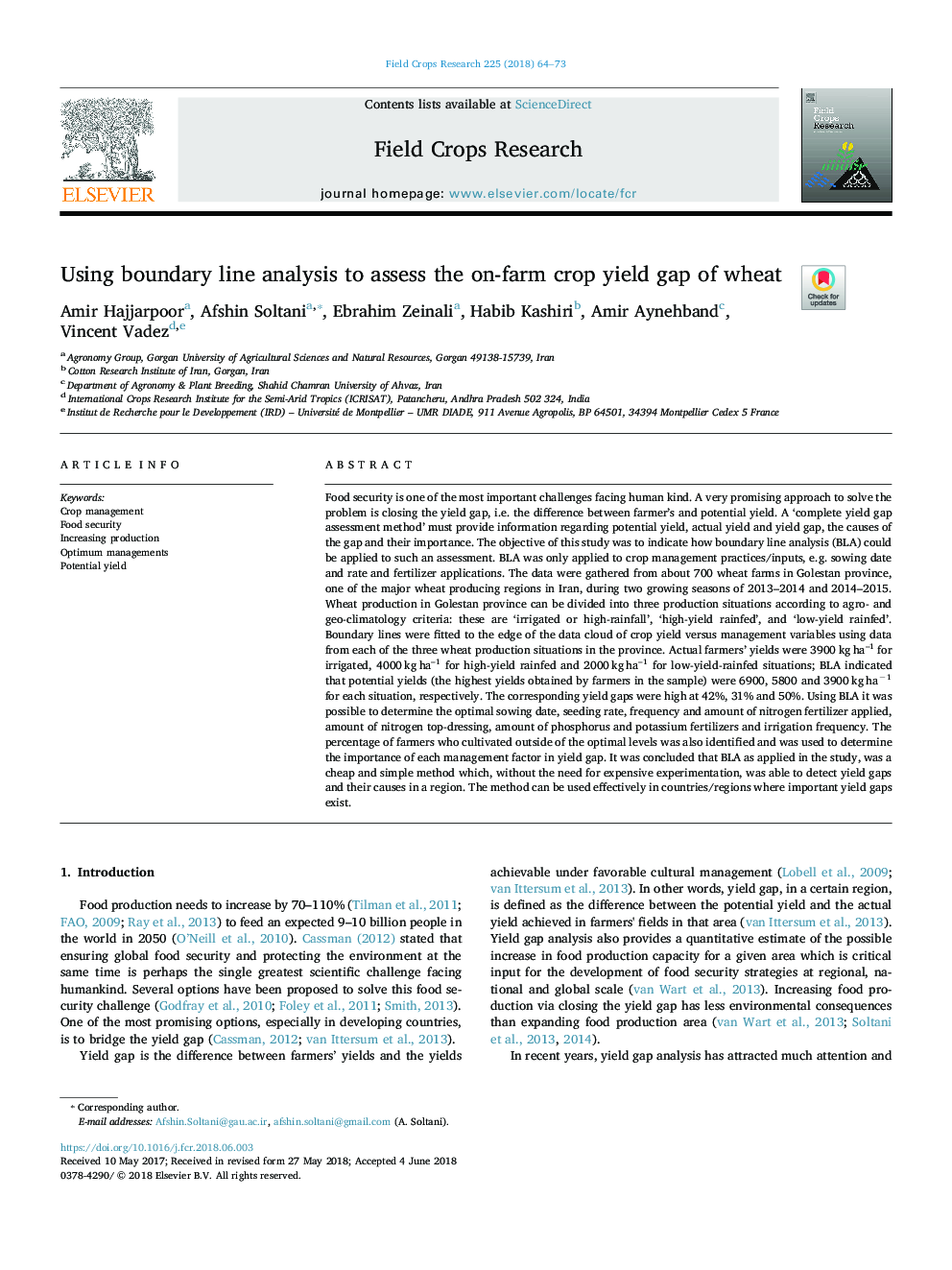| کد مقاله | کد نشریه | سال انتشار | مقاله انگلیسی | نسخه تمام متن |
|---|---|---|---|---|
| 8879085 | 1624638 | 2018 | 10 صفحه PDF | دانلود رایگان |
عنوان انگلیسی مقاله ISI
Using boundary line analysis to assess the on-farm crop yield gap of wheat
ترجمه فارسی عنوان
با استفاده از تجزیه و تحلیل خط مرزی برای ارزیابی عملکرد محصول در مزرعه
دانلود مقاله + سفارش ترجمه
دانلود مقاله ISI انگلیسی
رایگان برای ایرانیان
کلمات کلیدی
مدیریت محصول، امنیت غذایی، افزایش تولید، مدیریت بهینه، عملکرد بالقوه،
موضوعات مرتبط
علوم زیستی و بیوفناوری
علوم کشاورزی و بیولوژیک
علوم زراعت و اصلاح نباتات
چکیده انگلیسی
Food security is one of the most important challenges facing human kind. A very promising approach to solve the problem is closing the yield gap, i.e. the difference between farmer's and potential yield. A 'complete yield gap assessment method' must provide information regarding potential yield, actual yield and yield gap, the causes of the gap and their importance. The objective of this study was to indicate how boundary line analysis (BLA) could be applied to such an assessment. BLA was only applied to crop management practices/inputs, e.g. sowing date and rate and fertilizer applications. The data were gathered from about 700 wheat farms in Golestan province, one of the major wheat producing regions in Iran, during two growing seasons of 2013-2014 and 2014-2015. Wheat production in Golestan province can be divided into three production situations according to agro- and geo-climatology criteria: these are 'irrigated or high-rainfall', 'high-yield rainfed', and 'low-yield rainfed'. Boundary lines were fitted to the edge of the data cloud of crop yield versus management variables using data from each of the three wheat production situations in the province. Actual farmers' yields were 3900â¯kgâ¯ha-1 for irrigated, 4000â¯kgâ¯ha-1 for high-yield rainfed and 2000â¯kgâ¯ha-1 for low-yield-rainfed situations; BLA indicated that potential yields (the highest yields obtained by farmers in the sample) were 6900, 5800 and 3900â¯kgâ¯haâ1 for each situation, respectively. The corresponding yield gaps were high at 42%, 31% and 50%. Using BLA it was possible to determine the optimal sowing date, seeding rate, frequency and amount of nitrogen fertilizer applied, amount of nitrogen top-dressing, amount of phosphorus and potassium fertilizers and irrigation frequency. The percentage of farmers who cultivated outside of the optimal levels was also identified and was used to determine the importance of each management factor in yield gap. It was concluded that BLA as applied in the study, was a cheap and simple method which, without the need for expensive experimentation, was able to detect yield gaps and their causes in a region. The method can be used effectively in countries/regions where important yield gaps exist.
ناشر
Database: Elsevier - ScienceDirect (ساینس دایرکت)
Journal: Field Crops Research - Volume 225, 1 August 2018, Pages 64-73
Journal: Field Crops Research - Volume 225, 1 August 2018, Pages 64-73
نویسندگان
Amir Hajjarpoor, Afshin Soltani, Ebrahim Zeinali, Habib Kashiri, Amir Aynehband, Vincent Vadez,
